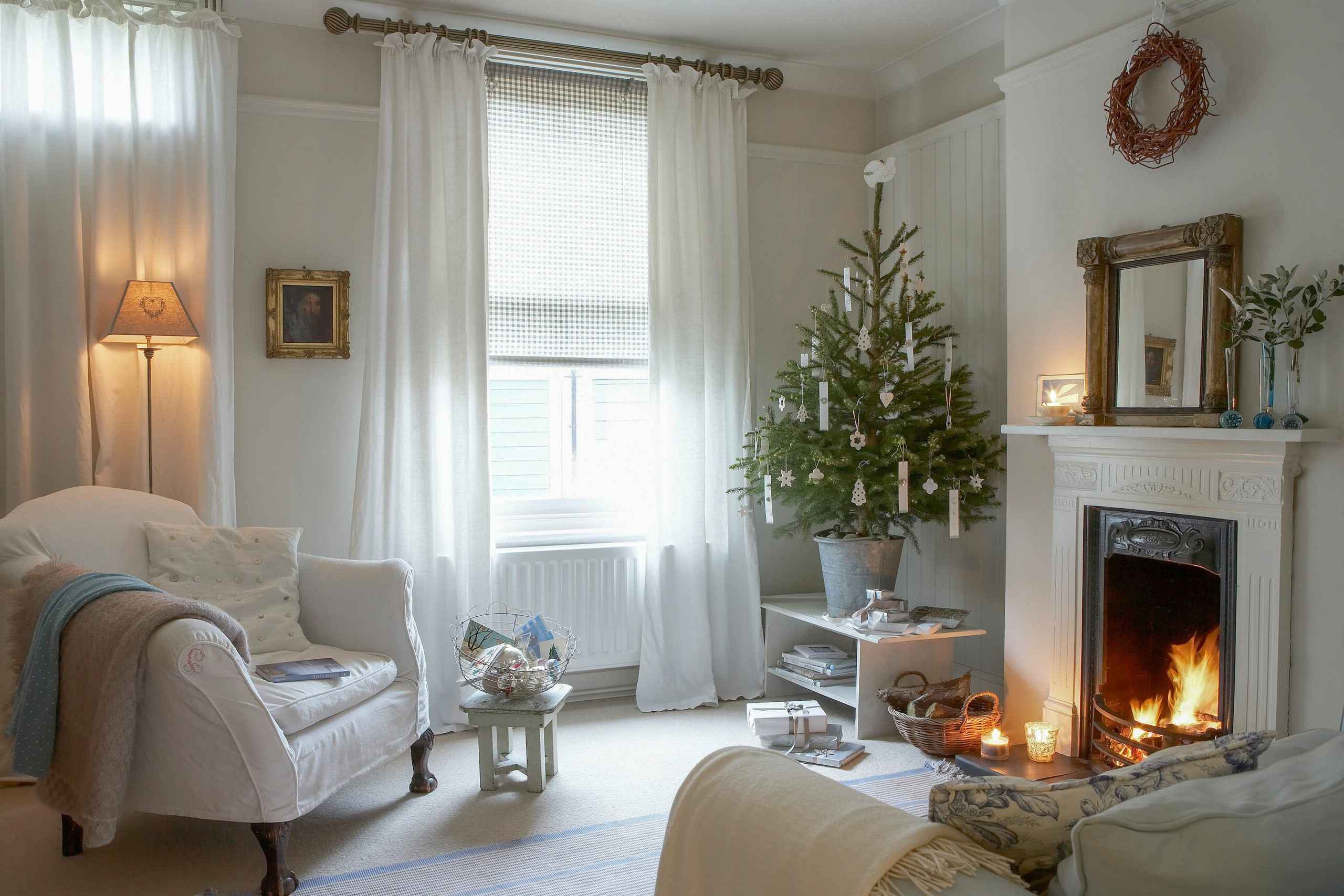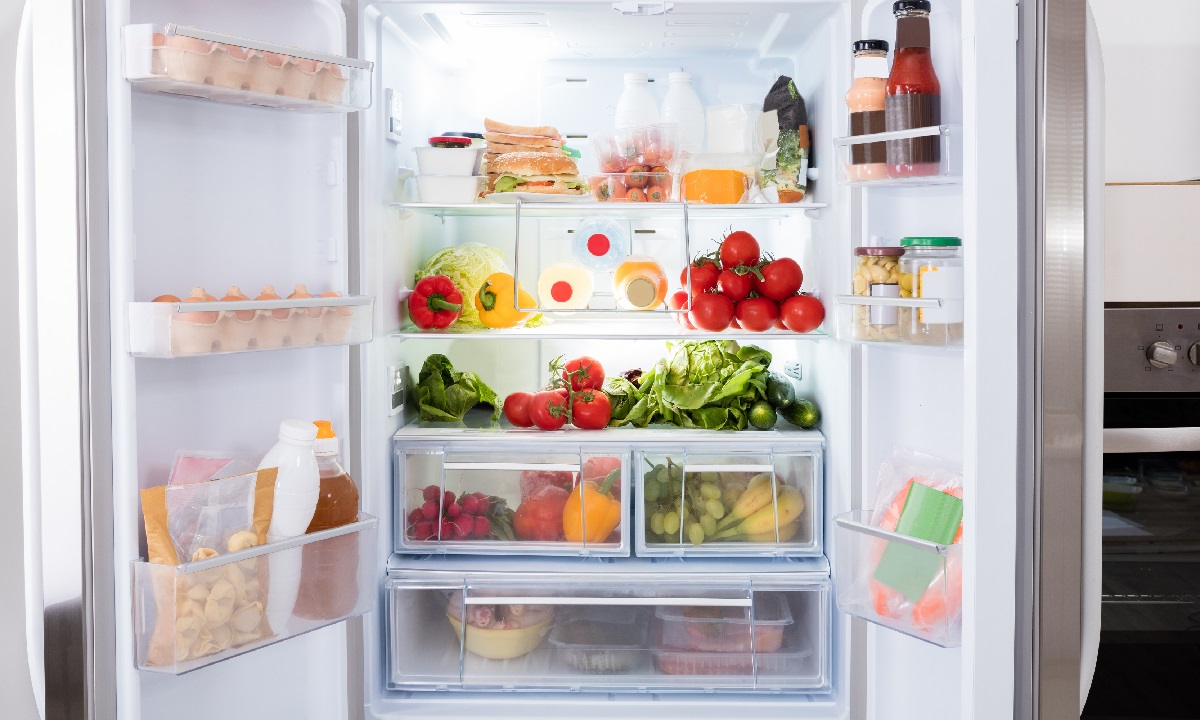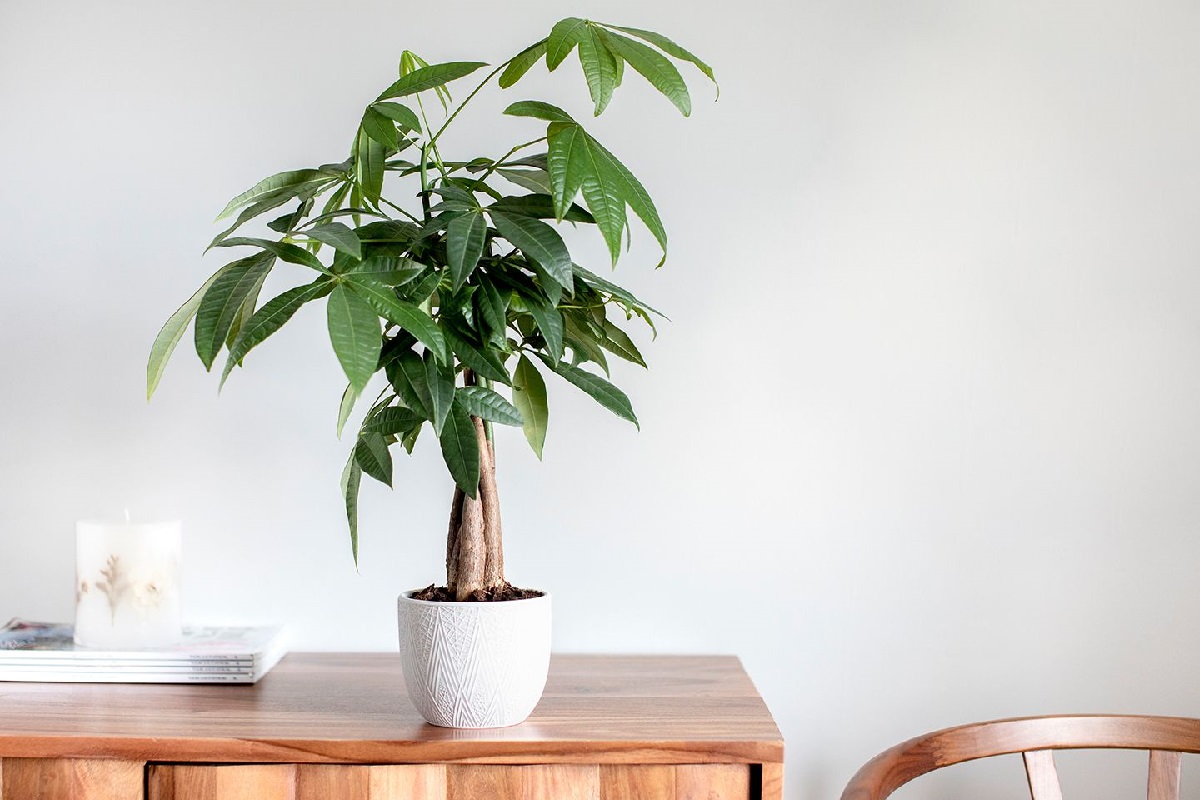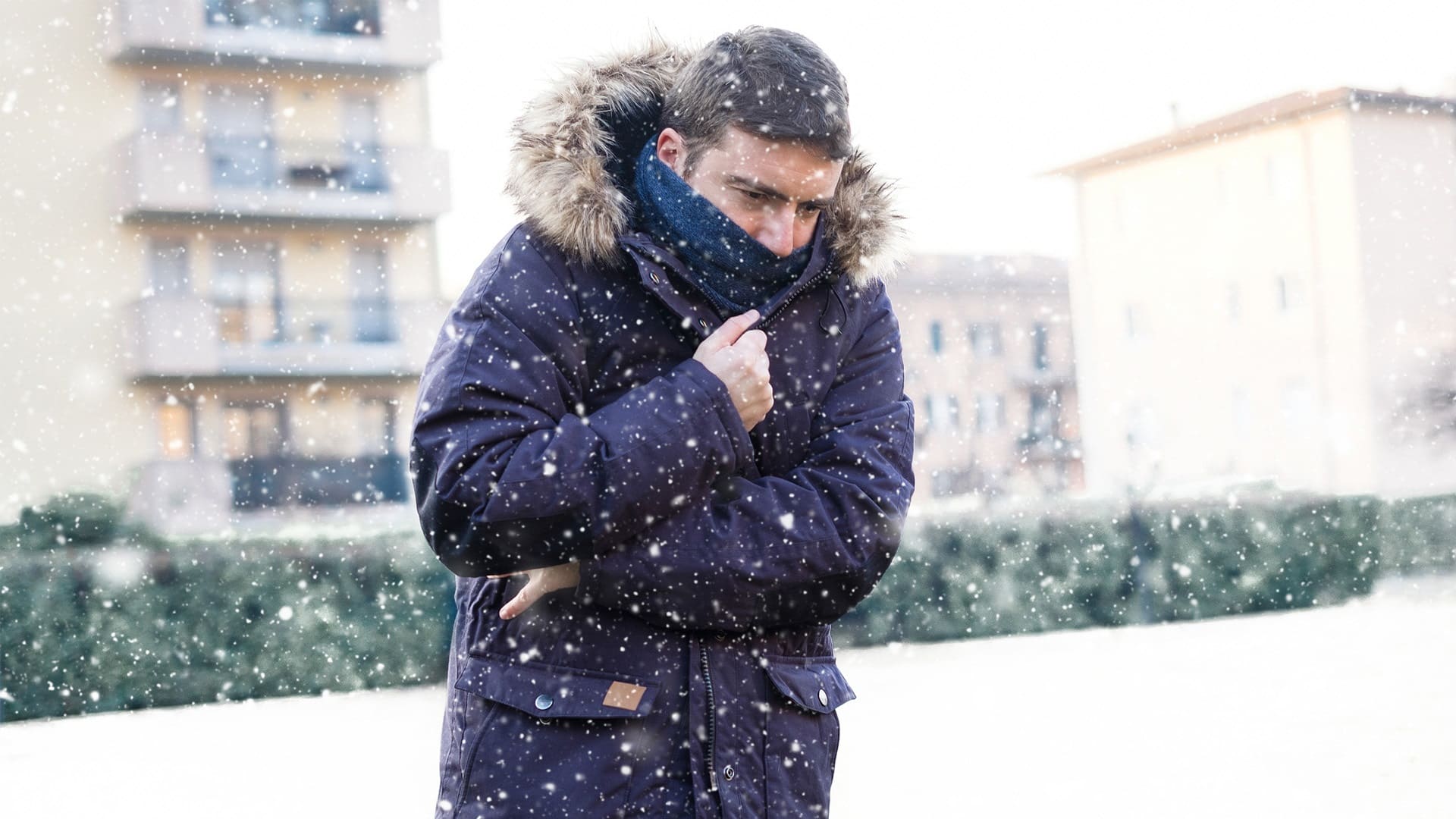Home>Weather and Climate>Tips For Keeping Your Home Warm In Cold Weather


Weather and Climate
Tips For Keeping Your Home Warm In Cold Weather
Published: March 5, 2024
Learn effective tips for keeping your home warm during cold weather. Discover ways to maintain a comfortable indoor climate. Helpful advice for weather and climate control.
(Many of the links in this article redirect to a specific reviewed product. Your purchase of these products through affiliate links helps to generate commission for Temperatures.com, at no extra cost. Learn more)
Table of Contents
- Importance of Proper Insulation
- Utilizing Thermal Curtains and Draft Stoppers
- Using Space Heaters and Electric Blankets
- Sealing Windows and Doors
- Maximizing Sunlight and Natural Heat Sources
- Maintaining Your Heating System
- Dressing in Layers and Using Warm Bedding
- Cooking and Baking to Generate Heat
- Utilizing Humidifiers to Retain Heat
Importance of Proper Insulation
Proper insulation is the cornerstone of a warm and cozy home during cold weather. It acts as a protective barrier, preventing the escape of heat and the infiltration of cold air. Without adequate insulation, your home may struggle to retain warmth, leading to discomfort and increased energy costs. Here's why proper insulation is crucial for maintaining a comfortable indoor environment:
-
Energy Efficiency: Effective insulation significantly reduces heat loss, allowing your heating system to operate more efficiently. By minimizing the need for constant heating, insulation helps lower energy consumption and, consequently, reduces utility bills.
-
Consistent Temperature: Insulation helps maintain a consistent indoor temperature throughout your home. It prevents cold spots and drafts, ensuring that every room remains comfortably warm, regardless of its proximity to external walls or windows.
-
Environmental Impact: By reducing energy consumption, proper insulation contributes to a smaller carbon footprint. It aligns with sustainable living practices and supports environmental conservation efforts.
-
Structural Protection: In addition to its thermal benefits, insulation also plays a role in protecting your home's structure. It helps prevent moisture buildup and condensation, which can lead to mold growth and structural damage.
-
Comfort and Well-being: Adequate insulation creates a more comfortable living environment, promoting well-being and reducing the risk of cold-related health issues. It allows you to enjoy a cozy atmosphere without constantly adjusting the thermostat.
-
Long-term Savings: Investing in proper insulation is a long-term strategy for cost savings. It not only reduces immediate heating expenses but also contributes to the overall durability and value of your home.
In essence, proper insulation is a fundamental element in creating a warm and inviting living space, especially during cold weather. It offers a multitude of benefits, ranging from energy efficiency and environmental responsibility to enhanced comfort and structural protection. By prioritizing insulation, you can transform your home into a welcoming retreat, shielding it from the harsh effects of winter while optimizing energy usage.
Utilizing Thermal Curtains and Draft Stoppers
During the chilly months, the strategic use of thermal curtains and draft stoppers can significantly contribute to maintaining a warm and comfortable home environment. These simple yet effective solutions offer insulation and draft prevention, helping to conserve heat and reduce energy costs. Here's how you can leverage thermal curtains and draft stoppers to enhance the warmth and coziness of your living space:
Thermal Curtains:
Thermal curtains, also known as insulated curtains, are designed to minimize heat transfer through windows. They feature multiple layers of fabric, often including a thermal lining, to provide enhanced insulation. When drawn closed, these curtains create a barrier that helps retain indoor heat while blocking out cold drafts. Additionally, they can serve as effective light blockers, offering privacy and light control along with their thermal benefits.
When selecting thermal curtains, consider the R-value, which indicates the curtain's insulating capacity. Higher R-values signify superior insulation. Opt for curtains that complement your interior decor while offering the desired level of thermal protection. Darker colors tend to absorb more sunlight, contributing to additional warmth during the day.
Draft Stoppers:
Draft stoppers, also referred to as draft blockers or door snakes, are simple yet practical devices designed to prevent cold air from seeping in under doors and windows. These can be purchased or easily crafted at home using insulating materials such as foam, fabric, or even dried rice or beans. By placing draft stoppers along the bottom of exterior doors and windows, you can effectively block drafts and maintain a more consistent indoor temperature.
To maximize their effectiveness, ensure that draft stoppers create a snug seal against the floor or window sill. Regularly check and adjust them as needed to address any gaps or wear. In addition to preventing cold drafts, draft stoppers can also help reduce noise infiltration and enhance overall energy efficiency.
By incorporating thermal curtains and draft stoppers into your home, you can create a cozier and more energy-efficient living space. These simple yet impactful solutions offer practical ways to combat heat loss and drafts, ultimately contributing to a warmer and more inviting atmosphere during the colder months.
Using Space Heaters and Electric Blankets
During cold weather, space heaters and electric blankets serve as valuable assets in maintaining warmth and comfort within your home. These versatile devices offer targeted heat distribution, allowing you to create cozy environments in specific areas while minimizing overall energy consumption. Here's how you can effectively utilize space heaters and electric blankets to enhance your indoor comfort during chilly periods.
Space Heaters:
Space heaters are portable heating units that can be used to supplement central heating systems or provide warmth in individual rooms. They come in various types, including convection, radiant, and ceramic heaters, each offering unique benefits in terms of heat distribution and energy efficiency. When using space heaters, it's essential to prioritize safety and proper placement to maximize their effectiveness.
Placement and Safety: Position the space heater on a level, non-flammable surface, ensuring that it is at a safe distance from furniture, curtains, and other combustible materials. Avoid placing it near high-traffic areas to prevent accidental contact. Additionally, always plug the heater directly into a wall outlet and never use an extension cord, as this can pose a fire hazard.
Supplemental Heating: Space heaters are ideal for providing supplemental warmth in frequently used areas, such as home offices, living rooms, or bedrooms. By using them strategically, you can maintain comfortable temperatures in specific zones without needing to raise the thermostat for the entire house, thereby conserving energy and reducing heating costs.
Energy-Efficient Models: Consider investing in energy-efficient space heaters with programmable thermostats and eco modes. These features enable you to customize heating schedules and optimize energy usage, promoting cost-effective warmth while minimizing environmental impact.
Electric Blankets:
Electric blankets offer a luxurious and energy-efficient way to stay warm during cold nights. They are equipped with insulated wires that generate heat when connected to a power source, allowing you to enjoy a cozy sleeping environment without excessive heating throughout the entire house.
Pre-Heating Beds: Electric blankets can be used to pre-heat beds before bedtime, ensuring a warm and inviting sleeping surface. This pre-heating feature eliminates the need to keep the entire bedroom heated throughout the night, contributing to energy savings and personalized comfort.
Safety Considerations: When using electric blankets, it's crucial to follow manufacturer guidelines and safety precautions. Inspect the blanket for any signs of wear or damage, and avoid folding or bunching it to prevent overheating. Additionally, always unplug the blanket when not in use to mitigate potential fire risks.
Customizable Warmth: Many electric blankets offer adjustable heat settings, allowing users to tailor the level of warmth to their preferences. This customization feature ensures personalized comfort, accommodating varying temperature preferences among household members.
By incorporating space heaters and electric blankets into your cold-weather comfort strategy, you can create inviting and warm spaces while optimizing energy usage. These versatile heating solutions offer targeted warmth and customizable comfort, empowering you to maintain a cozy home environment without excessive reliance on central heating systems.
Sealing Windows and Doors
Properly sealing windows and doors is a fundamental step in fortifying your home against the intrusion of cold air and the loss of precious heat during cold weather. Even minor gaps and cracks around windows and doors can significantly impact indoor comfort and energy efficiency. By addressing these potential entry points for cold air, you can create a more thermally resilient and cozy living environment. Here's how you can effectively seal windows and doors to bolster your home's insulation and warmth retention:
Weather Stripping:
Weather stripping is a versatile and cost-effective solution for sealing gaps around windows and doors. It consists of narrow strips of material, such as rubber, foam, or vinyl, that are applied to the edges of movable components, creating a tight seal when closed. When selecting weather stripping, consider the specific needs of each window and door, opting for materials that offer durability and resilience against varying weather conditions.
Caulking:
Caulking serves as a reliable method for sealing stationary gaps and cracks around window frames and door casings. This flexible material is applied to areas where different building materials meet, effectively filling in small openings and preventing air infiltration. Prioritize high-quality, weather-resistant caulking products to ensure long-lasting performance and optimal sealing capabilities.
Draft Guards:
Draft guards, also known as draft excluders or draft blockers, are designed to seal the bottom gap of doors, preventing cold air from entering and warm air from escaping. These simple yet effective devices can be easily installed along the base of exterior doors, creating a barrier against drafts and enhancing overall insulation. Consider utilizing draft guards with adjustable or customizable features to accommodate varying door sizes and configurations.
Window Insulation Film:
Window insulation film offers an additional layer of thermal protection, particularly for single-pane windows or windows with compromised seals. This transparent film is applied directly to the interior glass surface, creating an insulating barrier that reduces heat loss and drafts. When properly installed and sealed, window insulation film can significantly enhance the thermal performance of existing windows, contributing to improved energy efficiency and indoor comfort.
Door Sweeps:
Door sweeps, or bottom door seals, are essential components for sealing the gap between the bottom of the door and the threshold. These durable strips of material effectively block drafts and outdoor elements from entering the home, promoting a more airtight and insulated environment. When installing door sweeps, ensure a snug fit and proper alignment to maximize their sealing capabilities.
By implementing these strategies to seal windows and doors, you can fortify your home against heat loss and cold drafts, fostering a warmer and more energy-efficient living space. These proactive measures not only enhance indoor comfort but also contribute to reduced energy consumption and heating expenses, aligning with sustainable and cost-effective home management practices.
Read more: Tips For Pouring Concrete In Cold Weather
Maximizing Sunlight and Natural Heat Sources
Maximizing sunlight and leveraging natural heat sources is a practical and sustainable approach to enhancing the warmth and comfort of your home during cold weather. By harnessing the power of sunlight and strategically utilizing natural heat sources, you can reduce reliance on artificial heating methods and optimize energy efficiency. Here's how you can effectively maximize sunlight and natural heat sources to create a cozy and inviting living environment:
Strategic Window Management:
Strategic window management plays a pivotal role in capturing and retaining solar heat within your home. During daylight hours, open curtains and blinds on south-facing windows to allow sunlight to penetrate and warm the interior spaces. South-facing windows receive the most direct sunlight throughout the day, making them ideal for harnessing solar heat. By maximizing the exposure of these windows to sunlight, you can naturally elevate indoor temperatures and reduce the need for continuous heating.
Thermal Mass Utilization:
Leveraging thermal mass materials, such as masonry, tile, or concrete floors, can help store and release heat, contributing to a more stable and comfortable indoor climate. These materials have the capacity to absorb and retain heat from sunlight exposure, gradually releasing it into the living space as temperatures decrease. By strategically incorporating thermal mass elements into your home's design or interior decor, you can capitalize on this natural heat storage mechanism, promoting a more consistent and sustainable warmth.
Solar Heat Capture:
In addition to passive solar heating through windows, you can explore the installation of solar heat capture systems, such as solar air heaters or solar thermal panels. These technologies harness solar energy to directly generate heat, which can be utilized to supplement your home's heating system. Solar air heaters, for instance, draw in outdoor air, pass it through a solar collector to absorb heat, and then circulate the warmed air into the interior spaces. By integrating solar heat capture solutions, you can tap into renewable energy sources and reduce reliance on traditional heating methods.
Indoor Heat Redistribution:
Once sunlight has imparted warmth to specific areas of your home, consider utilizing fans or natural convection to redistribute the accumulated heat to other rooms. Ceiling fans set to operate in a clockwise direction at a low speed can gently push warm air downward, effectively distributing it throughout the living space. Additionally, natural convection currents can be encouraged by leaving interior doors open, allowing heat to flow more freely and evenly across different areas of the home.
By embracing these strategies to maximize sunlight and natural heat sources, you can create a more sustainable, energy-efficient, and comfortable living environment. These approaches not only contribute to reduced energy consumption and heating costs but also align with eco-friendly and environmentally conscious living practices. Embracing the inherent warmth of sunlight and natural heat sources empowers you to cultivate a cozy and inviting home while minimizing your environmental impact.
Maintaining Your Heating System
Proper maintenance of your heating system is essential for ensuring consistent warmth, energy efficiency, and long-term reliability, especially during cold weather. By implementing regular maintenance practices, you can optimize the performance of your heating system, extend its lifespan, and minimize the risk of unexpected breakdowns. Here's a comprehensive overview of key maintenance tasks and best practices to uphold the functionality and efficiency of your heating system:
Professional Inspections:
Scheduling annual inspections and tune-ups with a qualified HVAC technician is crucial for assessing the overall condition of your heating system. During these inspections, the technician will conduct comprehensive checks, including examining the combustion chamber, inspecting the heat exchanger, testing safety controls, and verifying the efficiency of the system. Professional inspections help identify potential issues early on, allowing for timely repairs and adjustments to enhance performance and safety.
Filter Replacement:
Regularly replacing the air filters in your heating system is a fundamental maintenance task that promotes optimal airflow and indoor air quality. Clogged or dirty filters can impede airflow, strain the system, and compromise heating efficiency. By adhering to a schedule of filter replacement, typically every 1-3 months depending on usage and filter type, you can ensure unrestricted airflow and minimize strain on the heating system.
Cleaning and Dusting:
Keeping the heating system and its components clean is essential for preventing the accumulation of dust, debris, and contaminants that can hinder performance. Regularly dusting and cleaning accessible parts of the system, such as vents, registers, and visible components, helps maintain efficient heat distribution and reduces the risk of airborne particles circulating within the home.
Lubrication and Component Maintenance:
Many heating systems, particularly furnaces and heat pumps, contain moving parts that require proper lubrication to minimize friction and wear. Additionally, belts, bearings, and other components should be inspected and maintained to ensure smooth operation and reduce the risk of mechanical issues. Following manufacturer recommendations for lubrication and component maintenance is essential for preserving the system's functionality.
Thermostat Calibration:
Calibrating and testing the accuracy of your thermostat is essential for maintaining precise temperature control and optimizing energy usage. A properly calibrated thermostat ensures that the heating system operates efficiently and accurately responds to temperature adjustments, preventing unnecessary energy consumption and temperature fluctuations.
Ductwork Inspection:
The condition of the ductwork plays a significant role in the efficiency and performance of your heating system. Periodic inspections of the ducts for leaks, damage, or obstructions are essential for ensuring proper airflow and heat distribution. Sealing any leaks and addressing ductwork issues can enhance the overall efficiency of the heating system.
By prioritizing the maintenance of your heating system through these proactive measures, you can uphold its functionality, efficiency, and reliability, ultimately ensuring a warm and comfortable home environment during cold weather. Regular maintenance not only minimizes the risk of unexpected breakdowns but also contributes to energy savings and prolonged equipment lifespan. Embracing a proactive approach to heating system maintenance is a valuable investment in the comfort and well-being of your household.
Dressing in Layers and Using Warm Bedding
During cold weather, the way we dress and the type of bedding we use play a crucial role in maintaining personal comfort and warmth. Dressing in layers and utilizing warm bedding not only provides physical insulation but also contributes to a cozy and inviting atmosphere within the home. Here's a detailed exploration of the benefits and strategies associated with dressing in layers and incorporating warm bedding into your cold-weather routine.
Dressing in Layers:
Dressing in layers is a time-tested approach to managing body temperature and adapting to fluctuating indoor and outdoor conditions. This strategy involves wearing multiple lightweight clothing layers that can be easily adjusted to accommodate changes in temperature and activity levels. The concept of layering offers several advantages in cold weather:
-
Insulation and Flexibility: Layering allows for the creation of insulating air pockets between garments, effectively trapping body heat and providing warmth. By adding or removing layers as needed, individuals can adapt to varying temperatures throughout the day, whether indoors or outdoors.
-
Moisture Management: Layering facilitates moisture wicking and evaporation, helping to keep the body dry and comfortable. The innermost layer, often made of moisture-wicking materials, draws perspiration away from the skin, while outer layers provide protection against external elements.
-
Customized Comfort: Layering enables individuals to customize their level of warmth and comfort based on personal preferences and environmental conditions. It offers versatility and adaptability, allowing for seamless transitions between different thermal needs.
Utilizing Warm Bedding:
The choice of bedding materials and accessories significantly influences the quality of sleep and the ability to stay warm throughout the night. Warm bedding not only enhances personal comfort but also contributes to energy savings by reducing the reliance on excessive heating. Here are key considerations for utilizing warm bedding:
-
Quality Materials: Opt for bedding made from high-quality, insulating materials such as flannel, fleece, or natural fibers like wool. These materials offer superior warmth and comfort, creating a cozy sleeping environment conducive to restful sleep.
-
Layered Bedding: Similar to dressing in layers, utilizing layered bedding allows for customizable warmth and comfort. Adding extra blankets or a duvet insert provides the flexibility to adjust the level of insulation based on individual preferences and nighttime temperatures.
-
Thermal Retention: Warm bedding plays a vital role in retaining body heat during sleep, preventing discomfort and ensuring a restorative rest. Properly insulated blankets, comforters, and mattress toppers contribute to maintaining a comfortable sleeping temperature without excessive reliance on heating systems.
-
Bedding Accessories: Incorporating additional warmth-enhancing accessories, such as heated mattress pads or electric blankets, offers targeted heat distribution and personalized comfort. These accessories can be particularly beneficial for individuals with specific temperature preferences or those living in colder climates.
By embracing the practice of dressing in layers and utilizing warm bedding, individuals can effectively manage personal comfort and warmth during cold weather. These strategies not only promote energy efficiency and cost savings but also contribute to a cozy and restorative living environment. Prioritizing the selection of quality materials and embracing the versatility of layering empowers individuals to maintain optimal comfort and well-being, both during waking hours and restful nights.
Cooking and Baking to Generate Heat
Cooking and baking serve as more than just culinary activities during cold weather; they also offer a practical means of generating additional heat within the home. The process of preparing meals and baking goods involves the use of ovens, stovetops, and other cooking appliances that emit significant amounts of heat. By strategically planning meals and engaging in baking activities, individuals can harness this heat to contribute to the overall warmth and comfort of their living spaces.
When utilizing the oven for cooking or baking, the appliance generates substantial heat as it operates, especially during extended cooking times. This heat radiates into the surrounding kitchen area, creating a cozy and inviting atmosphere. To maximize the heat-generating potential of cooking and baking, consider preparing meals that require longer cooking durations or involve the use of the oven at moderate to high temperatures. Roasting meats, baking casseroles, or preparing homemade bread and pastries are examples of culinary endeavors that can effectively contribute to heat production within the home.
In addition to the oven, stovetop cooking also releases heat into the immediate surroundings. Pots and pans conducting heat on the stovetop emit warmth, which can be harnessed to enhance the comfort of the kitchen and adjacent areas. Engaging in stovetop cooking, particularly dishes that involve simmering or slow cooking, allows for the sustained release of heat, contributing to a cozy ambiance while simultaneously preparing delicious meals.
Furthermore, the act of baking not only yields delectable treats but also generates warmth within the kitchen and adjoining areas. The prolonged operation of the oven during baking sessions results in a steady emission of heat, creating a comforting environment that extends beyond the culinary process. Whether it's crafting homemade cookies, baking savory pies, or experimenting with artisanal bread recipes, the heat produced during baking activities contributes to a more inviting and snug home atmosphere.
By strategically incorporating cooking and baking activities into daily routines, individuals can leverage the heat generated by these culinary endeavors to enhance the warmth and comfort of their living spaces. This approach not only adds a practical dimension to meal preparation but also aligns with sustainable and energy-conscious practices. Embracing the heat-generating potential of cooking and baking empowers individuals to create a cozier home environment while enjoying the culinary delights that these activities bring.
Utilizing Humidifiers to Retain Heat
Humidifiers play a pivotal role in creating a comfortable and well-balanced indoor environment, particularly during cold weather. These devices are designed to increase the moisture content in the air, offering a multitude of benefits that extend beyond simple humidity regulation. When strategically utilized, humidifiers can effectively contribute to heat retention and overall warmth within the home.
One of the key advantages of using humidifiers to retain heat lies in their ability to counteract the dryness often associated with heated indoor spaces. During the winter months, central heating systems can lead to a reduction in indoor humidity levels, resulting in dry air that feels cooler than adequately humidified air. By introducing moisture into the air through the operation of humidifiers, individuals can create a more comfortable and thermally efficient living environment.
The presence of optimal humidity levels in the air can enhance the perception of warmth, even at lower temperatures. Moist air tends to feel warmer to the skin, promoting a sense of comfort and coziness. As a result, individuals may find that they can maintain a comfortable indoor temperature without the need to excessively raise the thermostat, ultimately contributing to energy savings and reduced heating costs.
Moreover, humidifiers can help prevent the adverse effects of dry air on respiratory health and overall well-being. Dry indoor air can lead to discomfort such as dry skin, irritated nasal passages, and aggravated respiratory conditions. By maintaining adequate humidity levels, humidifiers support respiratory comfort and alleviate the discomfort often associated with excessively dry air, fostering a healthier and more pleasant living environment.
In addition to promoting personal comfort, humidifiers can also contribute to the preservation of wooden furniture, musical instruments, and other items susceptible to damage from overly dry conditions. By maintaining a balanced level of indoor humidity, humidifiers help prevent wood from drying out, minimize the risk of cracks or warping, and safeguard delicate items from the detrimental effects of low humidity.
When integrating humidifiers into the home environment, it's essential to select the appropriate type of humidifier based on the specific needs of the space. Options include evaporative, ultrasonic, impeller, and steam vaporizers, each offering distinct features and benefits. Regular maintenance and proper cleaning of humidifiers are also crucial to ensure optimal performance and prevent the growth of mold or bacteria.
By harnessing the moisture-regulating capabilities of humidifiers, individuals can create a warmer, more comfortable, and healthier indoor environment during cold weather. The strategic use of humidifiers to retain heat not only enhances personal well-being and thermal comfort but also contributes to energy efficiency and the preservation of household items. Embracing the multifaceted benefits of humidifiers empowers individuals to cultivate a welcoming and balanced home environment, even in the midst of chilly temperatures.








